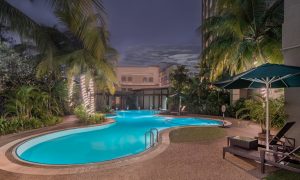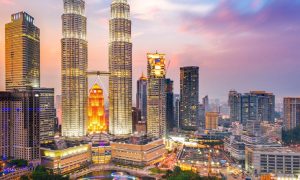[img_gallery][/img_gallery]
Whether an ocean, a lake, or a hot spring, water is often central to the travel experience. Louise Molyneux explains why it was a lake in the centre of Myanmar that captured the spirit of this unique country, a destination unlike any other in Southeast Asia.
In 1898, Rudyard Kipling wrote, “This is Burma. It is quite unlike any place you know about.” Over 100 years later, this still holds true. Having been cut off from the rest of the world during key years of the development of the mass tourism market it is, for now, unlike any other destination in Southeast Asia: devoid of the omnipresent Starbucks, 7-Eleven, and KFC outlets!
Now called Myanmar, it is home to the impressive, world-renowned sights of Shwedagon Paya in Yangon, Mandalay Palace and Fort, over 4,000 temples and pagodas in Bagan, and Mt. Kyaiktiyo, or the Golden Rock. It has a rich culture and a diverse, largely unspoilt landscape, which are reflected in various descriptive and evocative names: Amarapura, the Land of Immortality, Yadanarbon, the Land of the Gems and Suvanabhomi, the Golden Land. Yet it was a large, still body of water that, in my opinion, best captured the spirit of this fascinating, deeply spiritual land.
Inle Lake lies in the centre of Myanmar. At 11km long and 8km wide, it is the country’s second-largest freshwater body, and the villages and towns that border it are home to approximately 70,000 people, mainly from the Intha tribe. In peak tourist season, December to January, the number of inhabitants swells and yet it remains a refreshing, authentic and breathtakingly beautiful spot. To me, it never felt crowded or in any way spoilt by the modest tourist development around its edges.
Nyaungshew, the access point on the north side of the lake, is a bustling little town where wooden carts pulled by oxen happily share the roads with bicycles and the cars and minivans of tourists. The riverside – for this is about 3km from where the river enters the lake – is a parking lot for wooden longtail boats. In every direction, boatmen are patiently weaving their boats between each other and the rickety wooden piers as their passengers prepare to board or alight.
Longtail boats are, I think, a truly splendid way to travel. It is difficult to make yourself heard above the put-put-put-put of the engine, so you don’t feel compelled to make conversation and yet the noise is never overbearing. You have permission to sit back, let the wind blow away your cares, and immerse yourself in lake life. The therapeutic properties of the water wash over you, metaphorically of course; even at top speed you don’t get a single splash.
Arriving at Inle Resort, one of several isolated, boutique resorts on the lakeside, the twinkling eyes and wide welcoming smiles typical of the Myanmar people greeted us. Built in traditional style, with wooden bungalows on stilts set amongst lush gardens bursting with colour and several ponds, the serenity of the lake is coupled with comfortable accommodation, delicious food and very pleasant, local wines. Sitting at the bar on the deck, sipping a Mandalay Rum Sour as the sun sets, it is hard to imagine the hustle and bustle of home life, even if you want to. With no mobile phone reception (international phones can not roam anywhere in Myanmar) and no wi-fi (increasingly available in hotel lobbies but not this one), it is the perfect “get away from it all” spot.
Looking out early next morning, it was magical to see the mist rising off the lake and the surrounding hillsides emerging from their hiding places. It was cold when we set out in our longtail boat for a day exploring the lake, but the December sky was cloudless and the bright sun rapidly burnt through. We passed fishermen, comfortable in their own company, balancing (seemingly precariously) on the ends of their boats, casting their conical nets and beating the water with long sticks to scare the fish into the nets. Their unique style of rowing, standing on one leg and wrapping the other round a single oar to push it through the water, was developed to help guide their boats through the floating plants that are difficult to see from a sitting position. Their silent progression added to the peaceful, almost timeless, atmosphere.
Our first stop was In Phaw Khone, a village on the southern shore. I immediately had the sense that this was normal life, not something superficial created only to attract the tourist dollar. People paddled by slowly but with purpose, all with a job to do somewhere. Children waved from their teak wood houses on stilts, women washed clothes in the lake below. We floated through a number of such “streets”, making stops at a hand-weaving centre, where they fashioned thread from the stems of lotus flowers, a blacksmith, a silversmith, and a boat builder; a host of highly skilled tradespeople ensuring traditional crafts remain very much part of the present.
There is no shopping centre at Inle Lake. Instead, a daily market rotates among five different sites. Most popular with tourists is the floating market at Ywama, but the land-based markets boast the added attraction of hosting the tribal people from the surrounding hills.
Buddhism is deep-set throughout Myanmar and Inle Lake is no exception. The holiest site here is Phaung Daw Oo Paya on the western shore. This tiered pagoda is famous for housing five ancient Buddha images, now indistinguishable blobs owing to the massive amount of gold leaf that has been applied over the years by devotees seeking merit. The other local Buddhist temple that has achieved outside recognition is Nga Hpe Kyaung. Once famous for its jumping cats trained by the monks, it is a huge wooden meditation hall, constructed in the 1850s, and now home to an interesting collection of ancient Buddha images. Apparently the cats no longer jump because the monk who trained them has passed away.
Remaining in this non-industrialised world, our trip back to the resort through the glorious floating gardens was serene and refreshing. In order to maintain the cleanliness of the lake the farmers are not allowed to use any fertilizers or pesticides on the crops that grow on these large floating mats of vegetation. I could taste that in the unparalled freshness of the vegetables we ate at lunchtime. We saw rows and rows of tomato plants and plenty of boats laden low with bags of harvested tomatoes destined for export to Thailand.
Unfortunately, our two-night stay was too short for us to experience either of the key onshore tourist activities in the vicinity: guided trekking and a visit to the vineyards. You can choose between a single day’s walking, an overnight trek, or the two- to three-day, one-way hike to Kalaw. Whilst not yet on the world wine stage, this part of Myanmar is climatically and geologically well-suited to growing grapes, which is exactly what one German and one French winemaker decided to try. The two vineyards, Myanmar Vineyard and Red Mountain Estate, are open daily for tours and tastings. Oenophiles, prepare to be surprised!
Undoubtedly, now the doors have opened, Myanmar will rapidly develop as one of the most highly sought-after holiday destinations in Southeast Asia. My fervent hope is that as its tourist industry grows, Myanmar retains its natural beauty, authentic charm, and pervasive spiritualism.
Getting There:
Yangon is 2.5 hours flying time from Kuala Lumpur. The route is served by twice-daily flights on both Air Asia and Malaysia Airlines. The closest airport to Inle Lake is Heho, a one-hour flight from Yangon, serviced by several domestic airlines numerous times each day.
When To Go:
Like Malaysia, Myanmar has a tropical climate. Peak tourist season is December to February, when temperatures are lower (20-26°C during the day at Inle Lake) and there is very little rain. However, Inle Lake is arguably at its best during the 18-day long Phaung Daw Oo Paya Festival and the Thadingyut Festival of Lights (the end of Buddhist Lent) in late September and early October.
Where To Stay:
For the real-lake atmosphere choose one of the upmarket resorts on the water’s edge, sleeping in a villa built on stilts above the water and eating in the in-house restaurant. There are plentiful budget accommodation options and eateries in Nyaungshwe.
Source: The Expat Magazine March 2014
Read more articles on Myanmar:
- An Expat’s Unforgettable Trip to Myanmar
- Myanmar – In The Steps of Rudyard Kipling
- Myanmar: Bruised but Beautiful
What are your thoughts on this article? Let us know by commenting below.No registration needed.
"ExpatGo welcomes and encourages comments, input, and divergent opinions. However, we kindly request that you use suitable language in your comments, and refrain from any sort of personal attack, hate speech, or disparaging rhetoric. Comments not in line with this are subject to removal from the site. "



















